| Arthur Kirchheimer: | Born in Hamburg, Germany March 8, 1906 Deceased in Sosúa August 15, 2004 |
| Ilona Kirchheimer nee Detje: | Born in Hamburg, Germany February 16, 1906 Deceased in Sosúa August 25, 1994 |
Children: Hannah Unknown, Rene
Grandchildren: Franklin, Charis, Roni, Priscilla
FAMILY STORY:
Arthur and Ilona were both born in Germany to middle-class families. Arthur loved sports, especially soccer. Ilona (“Loni” to all who knew her) was a housewife who loved to cook and have an active social life. She loved going to the beach for a swim whenever she could, and in the afternoons she loved to play cards, especially rummy and canasta. Arthur and Loni met in Germany while working at Titz, a department store that was popular at that time. Loni was a salesperson at the store while Arthur was in charge of buying fine fabrics in Paris. He also used to set up the showcase of the store. People always complimented him for his good work and his attractive windows.
Sadly, their life changed when Hitler’s hate against Jews became a reality. They had to leave Germany. Most of Arthur’s siblings (Arthur had 8 sisters and brothers), including his parents, went to Argentina. Sadly, one of Arthur’s sisters was sent to a concentration camp, where she was exterminated. Arthur’s sister Gretel (see the Meyer’s Family History web page) went to Israel and later to Sosúa, while Loni and Arthur were recruited to go to the Dominican Republic. In 1941 they left Europe, first sailing to New York on the Algonquin. They remained on Ellis Island for a couple of weeks until they were cleared for passage. Then they once again boarded the same ship and sailed to Puerto Plata. They were part of what then was called the “First Luxembourg Group.“
Arthur and Loni settled in Sosúa and very rapidly started working towards building the town. Eventually they also got a farm. Arturo was able to buy a car and started transporting the settlers to neighboring towns, as well as to Ciudad Trujillo (the capital’s name at the time). He charged a small amount for this service. Due to his very pleasant personality, settlers and nonsettlers called him “Arturo el Simpático” (Arthur the friendly). Children loved him. While Arturo was busy with the farm, Loni was busy, along with her daughter Hanna, baking goodies and working for the community kitchen. Arthur and Loni spent the rest of their lives in Sosúa, where they passed away at an old age.
Born on March 8, 1909 in Hamm, Westphalia, Germany. Spent eight years in elementary school, and three years in a professional school. In three years I learned a profession in Gebruder Alsberg Department Store. At the age of 17 I went to Hamburg, where I worked at Hermann Tietz Department Store from 1926 to 1934 as a showcase decorator and seller of silk, among other positions. After 1928 I worked as a fashion specialist; I corresponded with Christian Dior in Paris and received his model because most of my customers were fashion salons.
1933: When the difficulty of the Hitler regime began, there was the dismissal of all Jewish employees. As the only Jew, due to my relationships with fashion shows, I worked another year.
Economy 1934: Tailor manufacturers offered me credit to continue my activities as an independent until 1936, but every day there were restrictions. The Nazis caused me difficulties and also the owners of the fashion parlors.
I had to change my address several times because the Nazis were persecuting my wife Loni, who was not Jewish.
I was always in danger because of the Hitler regime.
1937: I left Hamburg for Luxembourg. There I was not given permission to work except in farming and agriculture. I worked 2 ½ years as a worker in the field. I learned all about this profession and asked the Jewish committee ESRA for a visa to emigrate to Argentina. My passport was sent to to the embassy in Paris but was never returned – it was lost.
Now I had no passport, but had a photocopy. Since the Germans had occupied Luxembourg in 1940 I asked the German embassy for a new passport based on my copy of the passport. I received one but the name was changed: Isidoro Kirchheimer, and a large letter “J” was added, which meant JEW. So, I could not get any legal visa. The Nazis worked very fast with the Jews in Luxembourg.
As in Germany, 20 other Jews and I received orders to work every day except Sunday in a stone mine in Luxembourg Traer, a German division. I was working one month in this location. Here there were many Jews working, more dead than alive.
The Gestapo allowed the Jewish migrants to go to other countries, and in Antwerp (Belgium) the Cuban consulate sold visas for $500 each and 2 transports of 300 people were set to leave. They had left already with Loni and Hanna, meanwhile, we got married secretly in the city of Luxembourg, by a civil judge (in Luxembourg without knowledge of the Germans, who were already working in administration).
Loni went to Antwerp illegally, as this was the last trip permitted by the Gestapo. We received the visas after we had sold everything of value for US $800 – three visas to Nansen Pass (Luxembourg). On a Sunday in June 1940 we went on the last trip in five buses from Luxembourg to France, Spain and Portugal. Five days by bus and trains in Spain, where we thought this trip was the journey to freedom … !!
Then came a new transport complication, which was that we were accompanied by the Gestapo in each car, a car of Gestapo officers and 5 officials of the Portuguese NSDA. They did not allow us entry because the Gestapo was accompanying the transport and declared it as a fifth column of spies. We communicated with the American Jewish Committee in Lisbon, which was expecting us. While we were waiting we had already booked a boat two times. This was a failure.
Daily communications with the Committee did not result in an entry permit to Portugal. The station where we were for 15 days is called Villa Formosa. There were incredible moments, – two people died, and we were without food nor bathing possibilities. From each car of 60 people of all ages, they only allowed the Portuguese soldiers out of the wagons half an hour to be outdoors.
Day 15: During this time a locomotive arrived and we thought: thank God we go to Lisbon, Portugal…but the locomotive went back to the station in Spain. Then everyone got out and they forced us to enter other cars, because after 15 days locked in cars, it was worse than a pigsty.
The transport took us back through Spain to Bayonne (France). This city, like all France, was occupied by the Germans (10,000 soldiers). The commander of the German army had previously dispatched two transport ships to Portugal for legal reasons. Bayonne is the last city in France that the German army had occupied at the border with Spain in the Pyrenees.
I was surprised that these three transports had not been allowed entry to Portugal. The reason was that the Gestapo accompanied the transport.
Big and forceful discussions took place between the military and Gestapo. The Gestapo took us to a station called DAX. This is a place where the SA (storm troopers) and the SS had an administration, in France, where French Jews were ordered to work and forced to undergo medical testing, among other things.
At night about 4 AM they decide to transport us to Poland, to a concentration camp – the Holocaust.
The next day, the army commander in Bayonne – an angel of God – got permission to ensure that our transport got back to Bayonne because he had received the right to send us back to Portugal. This was due to the fact we had a legal trip with visas for Cuba. A train with soldiers from his regiment passed DAX and ordered the four cars with 300 people, including ourselves, to take us back to Bayonne and send us back to Portugal.
We thought, with God’s help, salvation. We arrived again in Bayonne with soldiers, and we got out of the last carriages. There we received soup for the first time from the Red Cross, a bowl of hot soup.
The commander took us to a military site which had ammunition, tanks and supplies, on to an unoccupied building with no windows and bars, two stories tall. We got dried straw and sleeping bags to sleep on the floor. This commander was not satisfied with the work of the Gestapo. We felt better in his hands and under his administration. Daily I listened to the discussions among us. The commander was interested in waiting, day by day, so that we could go out as legally as the previous transport.
Every day we received soup from the Red Cross, and in the early days, also some stale bread from the military.
The connection with the Committee in Lisbon did not give permission to enter Portugal. After four months in this camp, we were visited by a delegation from the Joint USA (Joint Distribution Committee) in Portugal. They were seeking personnel for an agricultural colony in Sosúa, Dominican Republic, including young families with professions and greater knowledge of agriculture.
As I worked in this area, I was one of the first to be picked and had the chance to enter our transport. The delegation made the selection in three criteria: a doctor for health, an agronomist and a professional. Based on age and individual condition, only 51 people out of the 297 on site were selected. We were on the list, and with the permission of the Gestapo were to leave France for Santo Domingo, Dominican Republic.
As the government of Portugal failed to provide for others, the Gestapo met every morning and sent 15 or 20 people to Vichy, free France, so it was reported. After 7 months only 51 persons were gathered who were accepted by the Gestapo.
The next day, the commander informed all 51 of us that if we did not leave that night, in the morning the Gestapo had us all.
So we went out with the help of the commander by train to Marseilles. Also with knowledge of the Jewish Committee in Marseilles and as illegals in France, we went in small groups with the people of Marseilles, Jews, to different shelters of the Committee.
We still had to wait for visas to the Dominican Republic and from the Joint. Five months were spent in Marseilles as illegals, with great difficulty. Five young people from our group were arrested and sent to the French Foreign Legion in Morocco, but the Committee had been able to void it. I also went to jail for 8 days, and Loni and Hanna were afraid.
We ate twice a day cornmeal and sometimes bread, all the food was registered with stamps, and what we were getting was not illegal. They were bad times.
Then, as I mentioned, five months later we received all the travel documents. We left by train to Portugal. The train was hired by the Committee. It made a stop, and 100 meters from the train there was a restaurant and we got two hours to eat: Chivo (goat) with sweet potatoes. After all this time, a meal to satisfy us. In 6 hours we were in Lisbon where we were greeted kindly by the Jewish Committee. They had a room and plenty of food.
Fifteen days and 10 pounds of weight gain later, we left on a boat: Moshino. The journey to freedom. Still, not all was happiness, because on the ocean, there was danger from mines and German submarines. The trip was not comfortable. Beds or wood floors. The boat was a cargo ship.
Thank God, we arrived in June in Sosúa, Dominican Republic. The ship did stop in Ponce, Puerto Rico, for 12 hours and we saw the wooden huts made of palms. In Sosúa, we have homes like these? Thank God.
We were received very well in the port of Puerto Plata. A hundred or more Dominicans greeted us with applause and 2 trucks took us to Sosúa. Now, the 51 of us knew nothing of colonization. We were greeted at an office of the DORSA (Dominican Republic Settlement Association) and had 8 days off to let us get to know the 360 settlers who were already there from three prior trips from Switzerland and Germany. Since I had knowledge of agriculture and livestock, after 15 days of accepting me as a settler I got the opportunity to choose my farm.
The settlers lived in barracks, and families in a room in a house for two families. Those who had no knowledge of agriculture had to learn in 6 months.
What I had to do! We received about 30 hectares of forest. We had to cut down trees and bushes – 24-years growth, in an area 22 km wide and long. This was “Settlement Sosua,” which the president of the Dominican Republic, dictator Rafael Leonidas Trujillo, offered at a worldwide meeting in Evian, France.
U.S. President Roosevelt collaborated with 32 nations in attendance at this conference. The only country willing to save Jews who were endangered by Hitler’s Holocaust was the Dominican Republic. They offered visas and assistance for up to 100,000 Jews without a country. Here there were representatives of the Joint, and they tried to acquire a territory of 22,000 km in the amount of $100,000, which was projected as an agricultural colony to save the Jews from Europe. It is paradoxical that a dictator gave permission for Jews to immigrate, while another from Germany, Hitler, tried to eliminate them. He had reasons for his offer because he had something pending with the USA.
From 1904-1916 the area of Sosúa was a United Fruit Company banana plantation. The land was not suitable for this, having so little land to plant bananas, and it was very rocky. We used the sites that had humus to plant vegetables that we needed for the 650 persons who ate in a cooperative kitchen.
Every day I took my supplies to the place where I had my land, and in the afternoon I arrived in the cooperative kitchen as the first with two other men. So there were three in one group, but it was not reasonable because not everyone was willing to do hard labor. We felled trees and weeds and then we burned the land to prepare for planting. Soon afterwards, both withdrew, so I had to work on my own. It was well worth it: working intensively and quickly, I had the land sown and harvested, with lots of everything: lettuce, carrots, green beans, onions, corn, and so on. The fruit brought to my warehouse was paid for at once. Part of the land was good for growing vegetables, and planting grass for dairy cows that gave milk for the house. The DORSA gave loans to all who needed them, so I bought the first cow for milk.
René was born in 1942, and we already had much of the land planted with grass. So we built a place to raise animals, cows and pigs. Later we built our house on the farm, where we lived for about 10 years with credit we received from the DORSA.
Due to occasional loneliness and transport difficulty in taking the child to school, Loni wanted to live in the Batey where there were many of us, and so every day in the early morning I rode to work. I raised pigs and cows, depending on the grass I had.
In 1943, after we processed the milk, cheese and butter – from overproduction – I started to sell products in the nearest town, Puerto Plata, 30 km from Sosua. The first trips were with dairy products, cheeses and sausages, and in a few months I had many business relationships. One of these was with an American manager of a chocolate factory in Puerto Plata, who had a car, a damaged Buick. I bought it from the man and had the first private car in Sosua. The repairs cost three times what I paid for it. I soon learned to drive, so had more opportunity to transport my products.
I opened an office in Puerto Plata called “Sosúa Products.” It employed a young man who spoke Spanish, and I traveled three times a week to Puerto Plata with products. On the farm I already employed a Dominican laborer, and later several more workers. The sale of products went well.
I began to carry passengers between Puerto Plata and Sosúa, as I was the only one who had a car. In the port of Puerto Plata small boats came to buy food, bananas, rice and so on. I also sold them sausage and cheese, since I had pigs and cattle on my farm which I had improved for the manufacture of sausages.
The animals had a genetic deficiency due to lack of care. When buying pigs, I got the idea of asking those who came to the pier of Puerto Plata to bring pigs from their country (Jamaica, Bahamas, Martinique, etc.). During the war they had been unable to sail large boats over the ocean because German submarines sank large boats, but not small boats.
So I bought pigs – one, two or three pigs – which I crossed with mine to have new blood and prevent genetic degeneration.
There were good results with improved pigs, which were needed by the sausage factory.
When the war ended in 1945, I imported from USA Gainsuill two pairs of Poland China and Berkshire pigs, and started breeding pure pigs. I also had good results with crossing and raising pure pigs.
In 1953 Trujillo offered Dominican nationality to the settlers, and in 1954 the German embassy also offered German citizenship again. So we had two passports, so far.
I then connected with the German embassy and the ambassador, and became the assistant and representative of the Botschaft (German embassy). My interest was that all of the German Jewish colonists of Sosúa were entitled to get, based on the laws of Germany, compensation or repayment for loss of values. They were also entitled to receive income payments as employees which were incurred prior to the Hitler regime. I dealt with this and all settlers from Germany received repayments or income. I served thirteen ambassadors for 42 years, and for my work I received an honor in 1989. German President Weinszacker gave me a medal with the cross of first class. I know I was the only Jew at this time who has received this award.
1952: Through my relationship with the governor in Puerto Plata and in the interest of the country (Dominican Republic), I offered to organize a cattle agricultural fair, since I already had many pigs and purebred cattle. I solicited animals from the whole region.
In 8 pens I exhibited 72 pigs of all sizes, some of which were imported, too. This was an experience I had never had before. Also, I exhibited cows and bulls and received many awards and trophies. Most importantly, I sold all the pigs, except the imported ones. I continued raising animals, and due to these successes, was asked to do the same in Santo Domingo. At this time the city was called Ciudad Trujillo.
1954: I organized a big national fair for the entire country, and many farmers brought their best animals, cows, pigs, horses and other animals. I participated with 72 heads of imported breeds. This had not been seen before by anyone in the Dominican Republic.
I had received almost all the awards; even Trujillo visited me and asked me how I had this fantastic result with breeding and if they were imported. I said there were two pairs imported, and all the others were born in our country. He embraced me and told me that immigration of Jews from 1940 to 1941 was a very positive thing, and if we had more Jews like me, the country would progress ahead. I thanked him and sent a couple to his farm: a female and a male.
Then, as a result of the outcome of the fair, in 1955 an international fair was formed; I also attended with 80 pigs. In 21 fairs in other cities I received as many as 150 trophies.
1974: This was the last fair I attended. I sold 12,000 examples throughout the country, and the newspapers published several articles about this. I cured a disease that pigs had, called “the dandy,” but this disease was the result of inbreeding. It was due to neglect of genetics in pigs. I’ve since sold and grew healthy pigs again. This fair was the last fair in which I exhibited animals. I then sold all the pigs to a veterinarian from Trujillo’s farm.
With the connection to the German embassy, Sosúa and Puerto Plata had a cultural enlightenment, showing documentary films which I got from the German embassy. I was also connected with the legation of Israel and France, and so every week we showed different films. I also became the representative of the embassy of Israel as honorary consul.
The German Embassy, at my request, appointed a new honorary consul three years ago in Puerto Plata, but I was still needed in Sosúa. Every four years there was a change of ambassador, and I would introduce the new one in Sosúa.
I am at an age where I have retired from my many obligations, but on my farm I am still very active. Four years ago my wife Loni died, and as of three years ago I have a new partner, which makes my life happy. She accompanied me on this trip to New Jersey, where my dear sister Margarete lives, and where I am writing this autobiography.
TIO ARTURO
P.S.: This brief autobiography was handwritten by Arthur Kirchheimer in 1998 during his trip to New Jersey, and delivered to Dela my cousin, my aunt’s daughter Gretel. In 2004, my brother Marcelo and his family, my cousins Dela and Yoram and I with my family and my Aunt Gretel, went to Sosúa to celebrate the 95th birthday of my Uncle Arthur (on March 8). It was a beautiful event, and there was a nice celebration with Arturo in physical and intellectual fulfillment. Unfortunately, in August the same year, 2004, Arthur died. I have transcribed the manuscript of my uncle with greater fidelity than his complicated letter and Spanish permitted, which required me to take some “license” (I have taken the liberty).
Alfredo Sternberg (nephew of Arthur)
P.P.S: The above English translation is based on the electronic version that my cousin Alfredo transcribed into a computer document. The grammar is imperfect so as to try to keep it as close a possible to Arturo’s original, yet I took a few liberties where Google Translate was hard to follow.
Yoram Meyer (nephew of Arthur) – June 2016
- Bobby Freundlich, Rene, Fritz Rosenzweig
- Camilo Carrau, Rene
- Ivan Garcia, Rene
- Arthur, Rene, Loni, Hanna, Pauli
- Judith Neumann, Jeannete Saleta, Pupi Schwarz, Mary Wohlmuth, Rene
- Rene, Mary, Rene
- unknown, Rene
- Hannah
- Hannah
- Hannah, Rene
- Hannah
- Felix Koch, Arthur
- Bertha Milz, Kaethe Levi, Trude Milz, Loni, Max Milz and baby Freddy Milz
- Arturo, Loni, Hilde and Pupi Schwarz in Puerto Plata
- Arturo with Pupi Schwarz
- Rene’s birthday
- Hannah, Loni, Rene
- Rene, Loni, Arthur
- Arturo in front of his house
- Arthur with sister Gretel Meyer
- Rene playing guitar
- Arthur
- Loni, Arthur
- Arthur and sister Gretel in Hamm, Germany
- Loni, Arthur, Rene
- Arthur, Rene
- Arthur, Rene, Loni
- Arthur and Loni, Germany 1936
- Loni, Rene, Arthur
- Rene
- Rene
- Ilona, Arthur
- Loni, Rene, Arthur
- Arthur(middle) at his farm house
© Copyright Protected


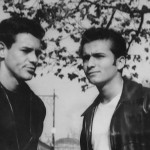
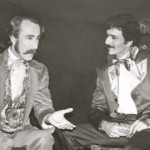
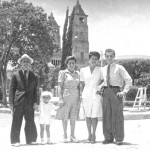

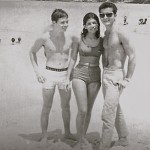

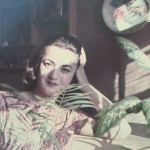

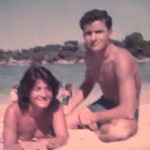
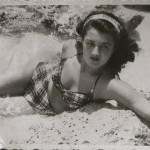
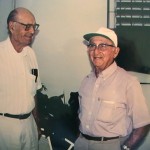




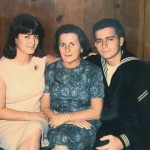

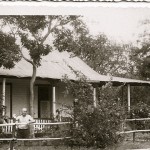


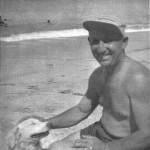

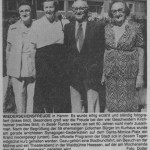
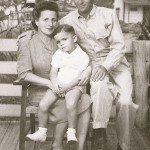
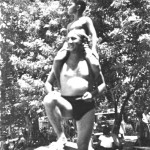
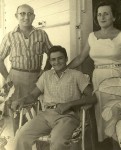
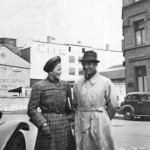
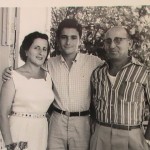
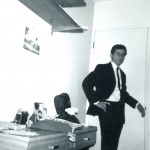
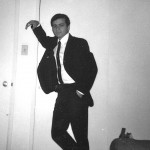

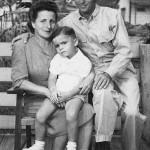
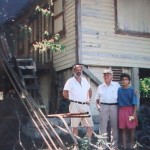
4 Responses to Kirchheimer, Arthur & Ilona